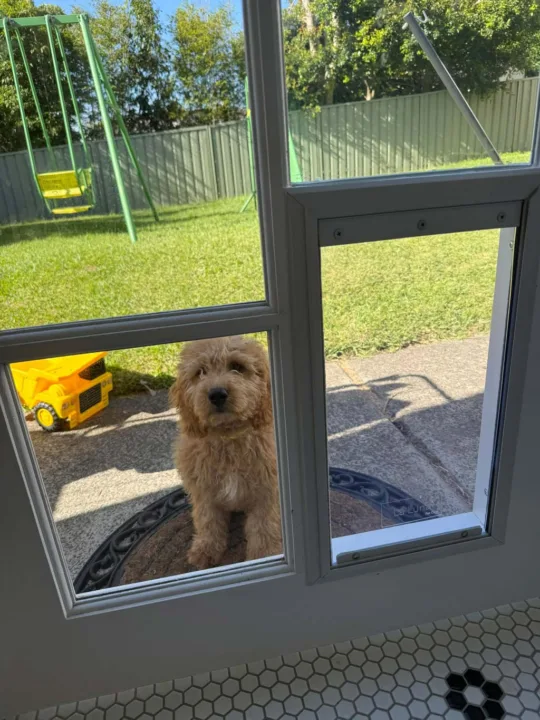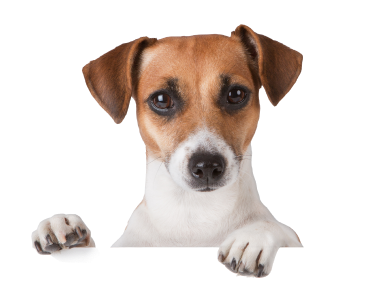Think Your Backyard’s Safe? Your Dog Might Disagree
Before installing a dog door and giving your pup the freedom to roam, there’s one essential question to ask: is your backyard truly safe for your dog?
A dog door offers independence and convenience — but only if the outdoor space it opens into is hazard-free. Many homeowners overlook just how many risks can exist in a typical backyard. From unsafe fencing to harmful plants and even heat exposure, there are plenty of factors to consider.
Here’s how to make sure your dog’s outdoor environment is as safe as it is enjoyable.
Fence First: Keeping the Adventure Contained
Dogs are born explorers — but they’re not great at recognising danger. A secure boundary is one of the most important elements of a safe yard. Walk the perimeter and check for any weak spots, gaps at the base, or damaged panels. Timber fences may rot over time, and metal panels can shift with soil movement. Ensure gates close properly, and if your dog’s a jumper or climber, the height should be high enough to contain their curiosity.
Smaller breeds may squeeze through narrow gaps, while larger dogs might dig under loose fence lines. If needed, add underground barriers or extend fence height to avoid accidental escapes — or determined ones.
🔗 Installing a dog door is just the first step. A safe boundary ensures your pet stays within reach even when you’re not watching.

Say Goodbye to Toxic Plants
Your garden might be blooming, but not everything growing there is safe. Many common decorative plants are surprisingly toxic to dogs. These include:
- Oleander
- Sago palm
- Azaleas
- Lilies
- Grapevines
Ingesting even a small amount can cause nausea, vomiting, or worse. If your dog likes to nibble on leaves or dig around, inspect every corner of your garden and remove anything potentially harmful. Consider switching to pet-friendly plants like marigolds, rosemary, or lavender. Not only do they look great, but they won’t pose a health risk to your pet.
Skip the Harsh Chemicals
Caring for your lawn shouldn’t come at the expense of your pet’s wellbeing. Many common pesticides, herbicides, and fertilisers contain chemicals that are unsafe for dogs — especially if they like to roll on the grass or lick their paws after a wander.
Look for products labelled “pet-safe,” and avoid using lawn treatments that remain active for hours or days after application. If you’ve treated a section of lawn or garden, block access to that area until it’s completely dry and safe again. For added peace of mind, you can explore natural pest control options or ask your vet for advice.
🔗 A pet door gives your dog independence — but that freedom should never include access to chemical hazards. Our dog door installation team can offer tips on positioning and safety as part of the install.
Provide Shelter and Shade Year-Round
Sun exposure is a serious risk, particularly during the Australian summer. Dogs can suffer heatstroke quickly without proper shade or shelter. Your backyard should include at least one cool, shaded spot where your dog can escape the heat — whether that’s beneath a tree, under a pergola, or in a well-ventilated dog house.
During winter, shelter becomes just as important. A windbreak or covered area gives your dog the option to stay dry and warm when the weather turns. Ideally, the shaded area should be close to where the dog door is installed so they can move freely between indoor and outdoor spaces.
Hydration is Non-Negotiable
No matter the weather, fresh, accessible water should always be available. If your dog is using a pet door to go in and out throughout the day, place a large, shaded water bowl in the yard that’s cleaned and refilled daily. Some owners even opt for automatic dispensers to make sure water stays topped up.
Position the bowl where it won’t be knocked over easily, and keep it out of direct sunlight to prevent it from overheating.
Eliminate Sharp or Swallowable Hazards
Yards can be full of hidden dangers — especially if your dog is prone to chewing or exploring. Secure any tools, loose materials, or small objects that could become choking hazards. Check for broken pots, sharp garden stakes, exposed nails or screws, and clean up regularly to prevent injury.
Puppies in particular are known to chew anything within reach, so stay vigilant during the first few weeks after installing a pet door.
Consider Personality and Breed-Specific Needs
Some dogs are content to sunbathe and sniff around the backyard. Others are escape artists or bark at anything that moves. Tailor your setup to your dog’s temperament. For anxious or easily overstimulated dogs, consider installing privacy screens or plant hedges near fencing to block visual triggers like cars or pedestrians.
Large, energetic breeds may benefit from a more structured yard layout with dedicated areas for play, rest, and toilet breaks — especially if they’ll be using a dog door throughout the day.
Level the Ground and Check for Holes
Uneven ground, hidden holes, or raised tree roots can cause trips, paw injuries, or even joint strain. Take a slow walk across your yard and look for any uneven surfaces that could be smoothed, filled, or fenced off. This step is especially important for senior dogs or those recovering from surgery.
Dogs with access to the backyard via a microchip-enabled dog door will be coming and going on their own — so safe, level access is crucial.
Final Recap: Backyard Safety Essentials
Make sure your backyard ticks these three essential boxes before giving your dog full access:
- Secure fencing with no gaps, climbable sections, or digging points
- Toxic plants, sharp objects, and unsafe chemicals are removed
- Fresh water, shade, and shelter are always available
Conclusion: Safety Before Freedom
A dog door installation offers amazing benefits — freedom, flexibility, and a happier pet. But it’s only as good as the environment it opens into.
By taking time to check your fencing, remove hazards, and prepare for all weather conditions, you’ll give your dog the safest possible experience outdoors. Whether you’re planning a basic installation or a custom solution, we’re here to help.
Need advice on the best setup for your dog?
Contact us today and speak to our team — we’ll help you create a dog-friendly backyard that works for your home and your pet.


